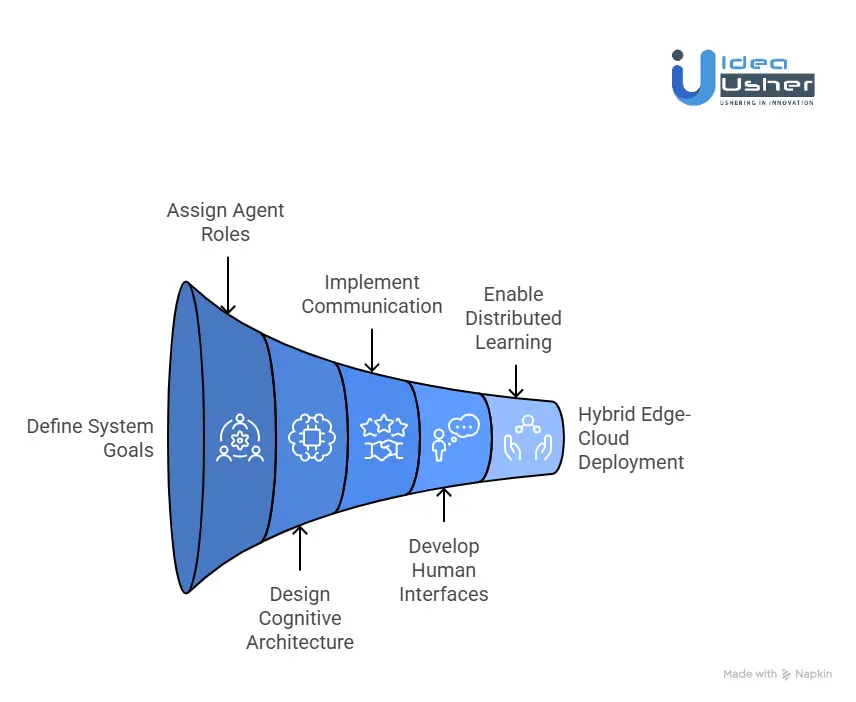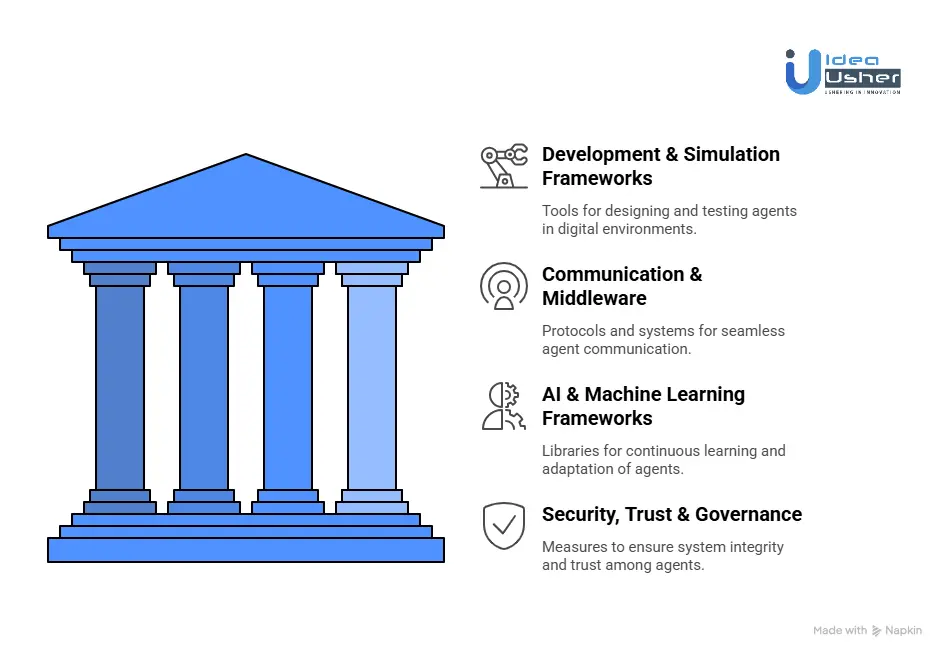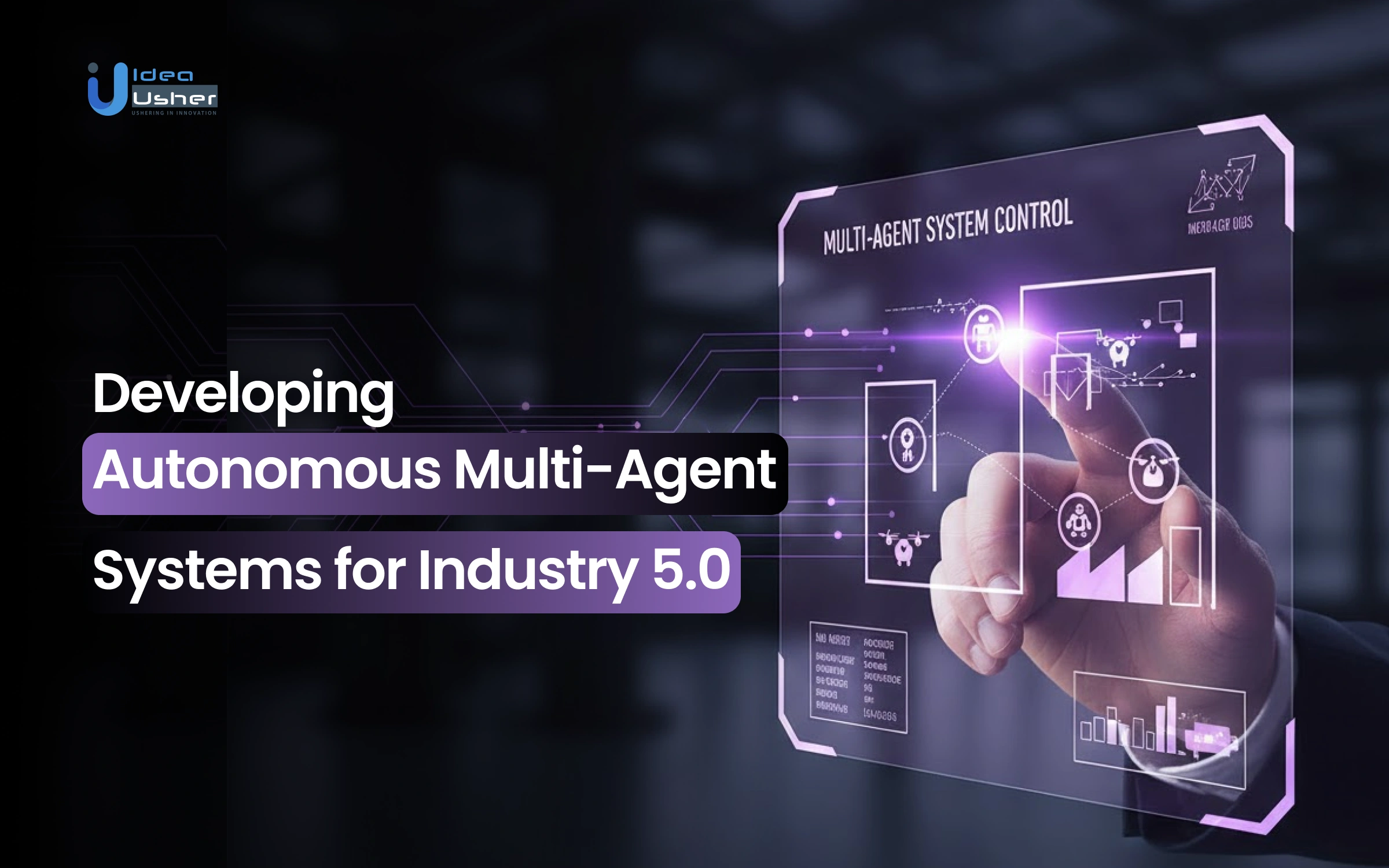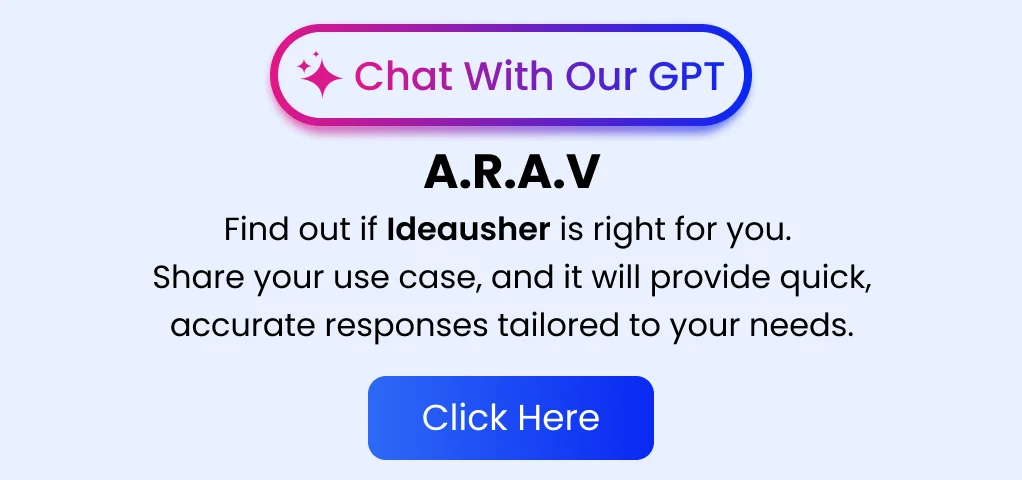Across industries, businesses face increasing pressure to perform faster, smarter, and more resiliently. Traditional automation simply can’t keep up with the fast-evolving demands of modern production, logistics, and digital systems. This is why many companies are turning to autonomous multi-agent systems. These systems, equipped with real-time decision-making, self-learning capabilities, and adaptive behavior, offer a new level of intelligence and collaboration. This shift aligns with the rise of Industry 5.0, which focuses on human creativity and AI working together.
Unlike Industry 4.0, which prioritized efficiency, Industry 5.0 fosters harmony, making systems more responsive and sustainable. Autonomous multi-agent systems support this vision by enabling machines to collaborate effectively, optimize resources, and complement human decision-making seamlessly.
Over the years, we’ve successfully developed a range of autonomous multi-agent system solutions powered by advanced technologies like distributed AI and edge computing. Drawing from this deep expertise, we’re sharing our insights through this blog to guide you through the process of building autonomous multi-agent systems for Industry 5.0. Let’s start!
Key Market Takeaways for Multi-Agent Systems
According to DimensionMarketResearch, the Multi-Agent System market is experiencing rapid growth, with expectations to jump from USD 6.3 billion in 2025 to USD 184.8 billion by 2034, reflecting a CAGR of 45.5%. This surge is driven by the growing adoption of autonomous multi-agent systems, which are becoming central to the evolving Industry 5.0. This new phase is marked by increased collaboration between humans and autonomous agents to enhance decision-making and operational efficiency.

Source: DimensionMarketResearch
Autonomous multi-agent systems are transforming industries by enabling decentralized decision-making and real-time collaboration. In sectors like manufacturing, logistics, and smart infrastructure, these systems facilitate smarter workflows, autonomous robotics coordination, and more efficient management of energy grids.
By combining human oversight with autonomous agents, these systems improve efficiency, resilience, and sustainability, adapting to complex industrial environments.
For instance, Amazon has implemented autonomous multi-agent systems in its warehouses, where robots work in tandem with human operators to streamline inventory management and order fulfillment.
Similarly, Siemens has deployed these systems in smart factories, improving production efficiency and reducing downtime by enabling real-time communication and coordination between machines and human teams.

Understanding Autonomous Multi-Agent Systems for Industry 5.0
An autonomous multi-agent system is a network of intelligent software units, or “agents,” that work together autonomously to manage complex tasks. In the context of Industry 5.0, these systems go beyond traditional automation by fostering collaboration between machines, processes, and humans.
The goal is to create a more resilient, human-centered, and sustainable manufacturing environment. Instead of relying on a single, centralized “brain” (like in traditional systems), Industry 5.0 uses a network of specialized, communicating agents, each capable of adapting and reacting to real-time situations.
To understand the full potential of MAS in Industry 5.0, let’s break down the key concepts that define these systems.
1. The “Agent”: The Intelligent Unit of Work
An agent is more than just a program or a sensor. It is a piece of software designed with three core capabilities:
- Autonomy: The agent can make its own decisions based on its programming and the data it perceives from its environment, without requiring direct human input.
- Proactivity: Agents are not merely reactive; they can take the initiative to accomplish tasks. For example, a predictive maintenance agent might order replacement parts before a machine breaks down.
- Reactivity: Agents can detect changes in their environment, such as sensor readings or messages from other agents, and respond to these changes in real time.
In a factory, for example, you could have a Quality Control Agent that monitors camera feeds, an Inventory Agent that tracks raw materials, and a Scheduling Agent that coordinates production timelines. Each agent excels in its own domain, but together they form a cohesive, adaptive system.
2. “Multi-Agent”: The Power of Decentralized Collaboration
The real power of MAS lies in agents working together. Unlike traditional systems, which have a single point of control (such as a central PLC or MES), MAS is decentralized. This means there is no single controller; instead, agents communicate, negotiate, and collaborate to achieve broader objectives that no single agent could accomplish on its own.
This is a key difference between Industry 4.0 and Industry 5.0:
| Feature | Industry 4.0 (Centralized) | Industry 5.0 (Multi-Agent) |
| Control | Top-down from a central system | Bottom-up, emergent from agent collaboration |
| Resilience | Low (single point of failure) | High (system adapts if an agent fails) |
| Flexibility | Rigid, hard to reconfigure | Dynamic, adapts to disruptions and new orders |
For instance, when a rush order comes in, the Scheduling Agent doesn’t give orders top-down.
Instead, it negotiates with the Inventory Agent to verify material availability, collaborates with Machine Agents to assign the task, and coordinates with the Logistics Agent to ensure timely delivery. All of this happens autonomously in a matter of seconds, without a single central controller.
How Autonomous Multi-Agent Systems Work?
Autonomous multi-agent systems work by breaking down complex tasks into smaller parts and assigning them to specialized agents. Each agent handles its own task autonomously and shares information with others to achieve the overall goal. These systems can adapt and improve over time, making them efficient in handling dynamic, real-time problems.

1. The Orchestrator Receives a Goal
A high-level objective is given to the system. For example, “Optimize the energy consumption and production schedule for Factory Floor B for the next 24 hours.”
2. Task Decomposition and Agent Assignment
The Orchestrator Agent, much like a project manager, breaks down this goal into smaller tasks:
- Task 1: Forecast energy demand based on production orders.
- Task 2: Analyze real-time energy prices from the grid.
- Task 3: Check the status and output of solar panels.
- Task 4: Calculate the most cost-effective and sustainable production schedule.
Each task is then assigned to a specialized agent:
- Demand Forecaster Agent
- Market Analyst Agent
- Renewables Monitor Agent
- Scheduling Optimizer Agent
3. Specialized Execution and Collaboration
Each agent works on its task using its own specialized tools and data:
- The Demand Forecaster pulls data from the ERP system.
- The Market Analyst queries live energy market APIs.
- The Renewables Monitor checks IoT sensors on the solar array.
- They all send their findings to the Scheduling Optimizer Agent.
4. Synthesis and Action
The Scheduling Optimizer synthesizes the information. It creates a production plan that runs energy-intensive machines during peak solar power hours or when grid prices are low. It schedules lighter tasks for other times and then sends the plan to the factory’s control system for execution.
5. Continuous Learning and Adaptation
In more advanced systems, agents can learn from past outcomes. If the plan leads to higher costs than expected, the agents can analyze the cause and adjust their models for future cycles, becoming more efficient over time.
The Critical Relevance to Industry 5.0
Industry 5.0 is defined by three core principles: Human-Centricity, Sustainability, and Resilience. Autonomous Multi-Agent Systems are the tools that make these ideals achievable in the real world.
Here’s how AMAS supports each principle:
1. Enabling a Human-Centric Approach
While Industry 4.0 often meant full automation, sidelining humans in the process, AMAS brings people back into the fold as strategic collaborators.
Collaboration, Not Replacement:
Instead of having one AI try to do a human’s job, AMAS allows multiple agents to work as a support team for the human operator. For example, a Maintenance Predictor Agent might flag a potential machine failure, while a Logistics Agent automatically orders the necessary spare part. The operator is empowered to focus on the complex repair, not the logistics.
Augmentation of Creativity:
A design engineer could instruct the system to generate 100 design variants based on sustainability criteria (using a Design Agent), run simulations (with a Simulation Agent), and source the best materials (via a Sourcing Agent). The human then uses their expertise to select and refine the best concept.
2. Driving Sustainable Operations
Sustainability requires optimizing complex, interconnected systems—something that is ideally suited to AMAS.
Dynamic Resource Optimization:
An AMAS can continuously balance energy consumption, waste output, and resource use in real-time. For example, a Waste-Monitoring Agent can collaborate with a Logistics Agent to route by-products to recycling partners, fostering a circular economy within the supply chain.
Lifecycle Management:
Agents can track a product’s entire lifecycle, from sourcing materials to its end-of-life, ensuring compliance with environmental regulations and identifying opportunities for reuse and remanufacturing.
3. Building Unprecedented Resilience
Resilience in industry means the ability to adapt to and recover from disruptions. AMAS is inherently adaptive and flexible.
Self-Healing Supply Chains:
If a storm blocks a shipping route, a Supply Chain Agent can detect the disruption immediately. It collaborates with a Logistics Agent to find alternative routes and works with a Production Agent to reschedule the factory’s operations based on the delayed components. This ensures minimal downtime.
Agile Production:
An AMAS can manage a “factory of one,” where each product on the line can be customized. When a custom order comes in, the system reconfigures robotic agents and workflow without halting production, making the factory highly resilient to unpredictable demand.
How to Develop Autonomous Multi-Agent Systems for Industry 5.0?
Developing autonomous multi-agent systems for Industry 5.0 involves defining clear system goals and assigning roles to each agent. Agents must be designed with cognitive frameworks for autonomous decision-making while ensuring efficient communication and coordination.
Having developed multiple autonomous multi-agent systems for Industry 5.0, we’ve refined a proven development framework.

1. Define Goals & Agent Roles
We begin by working closely with our clients to define the system’s key objectives, such as maximizing throughput or improving sustainability. From there, we assign specific roles to each agent, like production, logistics, quality, and sustainability, to ensure that each agent contributes effectively to the overall goals.
2. Design Cognitive Architecture
We design the cognitive architecture for each agent using the BDI model, enabling them to reason, decide, and act autonomously. By balancing local and global goals, we ensure agents work independently yet stay aligned with the broader system objectives.
3. Communication & Coordination
We create a secure, real-time communication framework that allows agents to interact efficiently using protocols like Contract Net or Consensus Algorithms. This ensures seamless coordination and task allocation across the system, adapting quickly to changing conditions.
4. Human-Agent Interfaces
We develop user-friendly interfaces, such as dashboards or conversational agents, that enable clients to input goals and monitor progress easily. Using NLP or LLMs, we ensure smooth interaction between humans and agents, making the system intuitive for non-technical users.
5. Distributed Learning & Adaptation
We implement distributed learning models, such as federated or reinforcement learning, enabling agents to adapt to real-time data. These updates are synchronized securely across the system, ensuring continuous optimization while maintaining data privacy.
6. Hybrid Edge-Cloud Deployment
Finally, we deploy the system on a hybrid edge-cloud infrastructure, ensuring low-latency performance at the edge and scalable coordination through the cloud. This approach guarantees that the system can grow with the client’s needs while remaining responsive and efficient.

Monetary Benefits of Autonomous Multi-Agent Systems for Businesses
To understand the monetary benefits of autonomous multi-agent systems, we need to explore both immediate and long-term financial impacts. MAS goes beyond task automation and reshapes how businesses optimize resources, reduce risk, and manage complexities.
The financial benefits of MAS extend beyond labor savings, driving improvements in asset utilization, agility, and resilience.
1. Direct Cost Reduction
While labor savings are the most obvious financial benefit of MAS, the real impact often lies in more subtle areas. The reduction in operational costs is driven by optimization of processes that eliminate waste, reduce inefficiencies, and improve throughput.
Example:
Amazon has deployed autonomous mobile robots in its fulfillment centers, significantly reducing time spent on non-value-added tasks and improving overall productivity.
Benefit: Reduction in operational costs and click-to-ship time through efficient automation.
Pre-MAS Scenario (Traditional Warehouse Operations):
- A picker in a warehouse typically walks 10-15 miles per shift, spending significant non-productive time simply moving from one location to another.
- This non-value-added time directly affects both labor productivity and the overall cost per unit processed.
Post-MAS Scenario (With Autonomous Mobile Robots):
Autonomous robots now bring shelves to stationary pickers, significantly reducing walking time and increasing picks per hour.
Assumptions:
- Productivity increase (with MAS): 2-3x.
- Hourly fully-burdened labor cost: $30 (including wages, benefits, overhead).
- Picks per hour (manual): 60.
- Picks per hour (with MAS): 120.
Cost per Pick (Pre-MAS): $30 / 60 picks = $0.50 per pick.
Cost per Pick (Post-MAS): $30 / 120 picks = $0.25 per pick.
Annual Savings (for a facility processing 10 million units annually):
( $0.50 – $0.25 ) * 10,000,000 = $2,500,000 in direct labor efficiency savings.
Not only does MAS reduce direct labor costs, but it also results in reduced error rates, faster picking times, and lower training costs due to the simplification of human tasks. These indirect savings make the financial case even stronger.
2. Asset Utilization & Throughput Maximization
MAS offers a transformative impact on asset utilization, maximizing the efficiency of existing resources and equipment. By optimizing real-time routing and task assignment, MAS ensures that assets work harder and smarter, significantly reducing idle time and increasing overall productivity.
Example:
In a manufacturing logistics hub, autonomous forklifts and tuggers are deployed to automate material handling, optimizing asset utilization by improving routing and eliminating empty runs and traffic jams.
Benefit: Maximized asset utilization and improved operational throughput by minimizing inefficiencies in equipment deployment.
Pre-MAS Scenario:
- A human-operated forklift has an effective utilization rate of 50-60% due to breaks, congestion, and suboptimal routing.
- Cost of forklift (human-operated): $50,000 annually (including capital and operational expenses).
- Effective utilization (human-operated): 55%.
- Cost per productive hour (human-operated): $50,000 / (2,080 hrs * 0.55) = $43.70/hr.
Post-MAS Scenario (With Autonomous Forklifts):
- Autonomous forklifts can achieve 80-90% utilization due to optimized routing and coordination between agents.
- Effective utilization (MAS): 85%.
Cost per productive hour (MAS): $50,000 / (2,080 hrs * 0.85) = $28.25/hr.
Efficiency Gain per Hour: $43.70/hr – $28.25/hr = $15.45 cheaper per productive hour.
Fleet Savings (for a fleet of 20 forklifts, running 2 shifts per day, 250 days per year):
$15.45 * 20 units * 16 hrs/day * 250 days/year = $1,236,000 in savings annually.
This efficiency means that existing equipment can perform at significantly higher levels, avoiding or delaying capital expenditure for new fleet additions. The result is vastly improved productivity without the need for extra investment in equipment.
3. Resilience & Downtime Mitigation
A critical yet often overlooked benefit of MAS is its resilience in the face of failures. In traditional systems, a single point of failure can halt operations, causing massive downtime costs. MAS, with its decentralized control, allows for immediate task rerouting, preventing disruptions and ensuring business continuity.
Example:
In a manufacturing setting, where machine failures can lead to significant downtime, MAS systems offer a solution to prevent complete production halts.
Benefit: Reduced downtime costs and improved operational continuity.
Pre-MAS Scenario (Centralized Control):
A critical machine failure can halt the entire production line for hours, resulting in massive revenue loss.
- Production line revenue per hour: $50,000.
- Average number of critical machine failures per year: 5.
- Average time to fix and restart line: 2 hours.
- Cost of downtime (Pre-MAS): 5 failures * 2 hours * $50,000/hr = $500,000/year.
Post-MAS Scenario (Decentralized, MAS-enabled):
MAS reroutes work dynamically, meaning downtime is only a fraction of what it used to be.
Cost of downtime (Post-MAS):
(5 failures * 0.25 hrs * $50,000/hr) + (5 failures * 1.75 hrs * $50,000/hr * 0.3 capacity loss) = $62,500 + $131,250 = $193,750/year.
Annual Savings from Avoided Downtime: $500,000 – $193,750 = $306,250 in savings from improved resilience.
By minimizing downtime and ensuring that the production line continues to function even in the event of failures, MAS helps protect revenue streams, creating a more predictable and stable financial outlook.
4. Dynamic Optimization for Energy & Resource Efficiency
MAS offers significant operational benefits by optimizing resource usage in real-time, particularly for energy consumption. By shifting energy-intensive tasks to off-peak hours and adjusting to real-time energy prices, MAS can significantly reduce operational costs.
Example:
In large-scale food processing operations, energy consumption can account for a significant portion of operational costs. MAS optimizes energy usage by shifting demand during peak price periods.
Benefit: Reduced energy costs by shifting consumption and dynamically optimizing usage based on real-time pricing.
Pre-MAS Scenario:
- Annual energy bill: $2,000,000.
- Percentage of energy that is shiftable (e.g., refrigeration, mixing, heating): 30%.
Post-MAS Scenario (Optimized Energy Usage):
MAS reduces energy consumption by 15% on the shiftable portion.
Annual Savings: $2,000,000 * 0.30 * 0.15 = $90,000.
MAS can continuously monitor and optimize energy consumption, resulting in savings on energy bills while maintaining operational performance.
The Reason Behind the 35% Productivity Gain from Implementing MAS
According to business reports, the productivity gain potential from MAS can reach up to 35%. This happens because MAS enables real-time decision-making, reducing wait times, and improving task flow. By dynamically allocating resources and automating routine processes, businesses can optimize operations and minimize downtime, making systems more efficient overall.
1. Elimination of “Wait States” and Bottlenecks
Traditional centralized systems, like ERP or MES, rely on sequential decision-making, where tasks wait for central approval before moving forward. This causes delays as information must flow through a single point of control.
MAS Advantage: MAS allows for real-time, parallel decision-making. Each agent (such as a robot or machine) operates autonomously, negotiating directly with other agents to continue its task. There’s no waiting for a central system to process commands.
For example, Amazon’s warehouse robots navigate autonomously, avoid collisions, and optimize their routes in real time. They don’t need to wait for commands from a central system, reducing wait times and speeding up the entire process. This boost in efficiency directly translates to a ~10% gain in throughput.
2. Resource Allocation & Load Balancing
Static scheduling leads to inefficiencies because production schedules quickly become outdated due to unforeseen delays or changes (machine breakdowns, rush orders, etc.).
MAS Advantage: MAS utilizes real-time negotiation and auctioning of tasks. Agents (machines or resources) dynamically bid for tasks based on their current workload, ensuring that work is allocated to the most available and capable resource at that moment.
For example, Uber’s dispatch system works similarly, where drivers (agents) bid for trips based on their proximity and availability. This dynamic allocation allows Uber to maximize the number of trips completed, achieving a ~10% improvement in overall platform and driver efficiency.
3. Reduction of Non-Value-Added Human Activity
Skilled human workers often spend a significant amount of time on routine, non-value-added tasks like checking status updates, searching for information, or manually coordinating with other systems.
MAS Advantage: MAS can automate these tasks, allowing agents to proactively deliver information or even take action on behalf of humans. Humans are only involved in high-value decision-making or handling exceptions.
At Quiet Logistics, autonomous mobile robots bring entire product shelves to human workers, eliminating the time they would otherwise spend walking through a warehouse. This significantly boosts worker productivity, as humans can focus on their core tasks, contributing to a ~10% systemic gain.
4. Zero-Touch Exception Handling
In traditional systems, exceptions such as tool failures or quality deviations typically require human intervention. Each minute spent diagnosing and addressing these issues leads to downtime.
MAS Advantage: MAS enables self-healing systems. When an anomaly is detected, the system doesn’t just raise an alert; it actively coordinates a response, rerouting tasks, notifying maintenance, or even isolating defective products. This minimizes the downtime caused by issues.

Common Challenges of Autonomous Multi-Agent Systems
The promise of a self-orchestrating, resilient factory powered by Autonomous Multi-Agent Systems is compelling. However, the journey from concept to deployment is filled with technical challenges.
Many companies understand the potential of MAS but struggle to implement it. Here are some of the most common obstacles we face and the solutions we’ve developed to overcome them.
1. Taming Coordination Complexity
When dozens or even hundreds of autonomous agents are involved, each with its own goal (e.g., maximizing throughput or minimizing energy), coordinating them becomes complex. Without the right strategy, agents may conflict, compete for resources, and cause bottlenecks.
Our Solution:
We implement sophisticated coordination methods to foster collaboration over conflict.
- Hierarchical Coordination Layers: We design a system where high-level “manager” agents set strategic goals, while “worker” agents handle tactical execution. This reduces conflicts and ensures that agents focus on their specific tasks without creating bottlenecks.
- Game-Theory-Based Negotiation: Instead of rigid rules, agents use game theory to negotiate resource allocation. This method ensures stable, efficient solutions, like auctioning resources, allowing the system to meet its goals without central control.
2. Bridging the Legacy Gap
Many factories rely on decades-old ERP and MES systems that were not designed for integration with modern AI agents. Connecting these legacy systems to a swarm of autonomous agents is a major hurdle for Industry 5.0.
Our Solution:
We create bridges that seamlessly connect modern MAS to legacy infrastructure.
- Custom Middleware & APIs: We develop lightweight middleware that serves as a translator between legacy systems (e.g., SQL databases, SAP, PLCs) and MAS. This layer ensures smooth data flow and makes old systems compatible with new agents.
- Digital Twins for Safe Integration: Before connecting MAS to physical equipment, we create a high-fidelity digital twin of the factory. This allows us to test the interactions between new agents and legacy systems in a virtual environment, resolving issues before they affect the production line.
3. Securing the Decentralized Ecosystem
In a centralized system, there’s one point of control to secure. But in a decentralized MAS, every agent is a potential vulnerability. Ensuring agents can trust each other and prevent rogue actors from compromising the system is a significant challenge.
Our Solution:
We build security and trust into the system from the ground up.
- Blockchain-Backed Reputation Systems: Each agent has a verifiable reputation score, based on its performance and reliability. This score, stored on a lightweight blockchain, helps agents decide whom to trust, creating a system-wide defense against malfunctions or malicious actors.
- Zero-Trust Security Models: We adopt a Zero Trust approach, ensuring that no agent or data is trusted by default. Every action, from data access to communication, is authenticated and authorized, preventing breaches from spreading through the system.
4. Preventing Communication Overload
With so many agents in communication, there’s a risk of creating network congestion. Constant updates can lead to latency, making the system slow and inefficient—especially when real-time control is critical.
Our Solution:
We optimize communication to ensure it supports, rather than hinders, real-time performance.
- Event-Based Triggers & Message Filtering: Agents only communicate when necessary. Instead of constant status updates, agents broadcast messages when important events occur (e.g., “Task Complete” or “Machine Down”), drastically reducing network traffic.
- Local Consensus Clusters: Agents are grouped into local clusters based on their function or location. This allows agents to reach consensus on issues within their cluster, minimizing the need for wider communication and reducing overall latency.
Top Tools for Autonomous Multi-Agent Systems for Industry 5.0
Industry 5.0 focuses on creating human-centric, resilient, and sustainable manufacturing. Autonomous Multi-Agent Systems are essential for this vision, enabling agents to communicate, collaborate, and adapt within a dynamic factory ecosystem. Here’s a breakdown of the core components needed to build MAS.

1. Development & Simulation Frameworks
Before deployment, agents need to be designed, modeled, and trained in a digital environment.
JADE (Java Agent DEvelopment Framework)
JADE is a powerful framework for building interoperable, peer-to-peer agent applications in industrial settings. It follows FIPA standards, handling agent lifecycles, communication, and coordination.
Microsoft Project Bonsai (Azure)
Project Bonsai uses machine learning to combine AI models with human expertise, making it ideal for industrial control systems. It helps build the cognitive core of autonomous systems with minimal AI expertise.
AnyLogic
AnyLogic enables you to create a digital twin of your factory for simulation and testing. It helps optimize agents’ behaviors by simulating real-world disruptions and dynamics in a safe virtual environment.
ROS (Robot Operating System)
ROS provides libraries and tools for robotic agents, supporting tasks like perception, motion control, and navigation. It’s crucial for creating mobile robots and collaborative robots (cobots).
2. Communication & Middleware
Agents need seamless communication with each other and legacy systems. This communication layer functions as the system’s nervous system.
MQTT & OPC-UA
- MQTT is a lightweight protocol for fast communication between IoT devices and agents, ideal for real-time control.
- OPC-UA standardizes communication with industrial equipment, enabling agents to understand and act upon factory data.
gRPC & REST APIs
gRPC supports fast, bi-directional communication between microservices in your MAS, while REST APIs enable cross-platform integration, such as pulling data from cloud ERP systems.
ZeroMQ
ZeroMQ enables high-speed, distributed messaging between agents. It’s perfect for rapid coordination and negotiation, which are central to MAS.
3. AI & Machine Learning Frameworks
MAS are not static, they learn and adapt. AI and machine learning are essential for continuous improvement.
TensorFlow Federated / PyTorch
Federated learning with TensorFlow Federated or PyTorch allows agents to train locally on their data and contribute to a global model, preserving data privacy while improving performance.
OpenAI Gym / PettingZoo
These libraries create simulated environments for Multi-Agent Reinforcement Learning (MARL). Agents learn through trial and error in these environments, optimizing strategies like balancing throughput and energy use.
4. Security, Trust & Governance
In a decentralized MAS, trust must be engineered. Security, transparency, and governance are crucial for ensuring system integrity.
Hyperledger Fabric
Hyperledger Fabric and other permissioned blockchains provide an immutable audit trail of agent interactions. This ensures transparency and trust, allowing agents to verify each other’s data and decisions.
OAuth 2.0 & Zero Trust Architecture
Zero Trust principles combined with OAuth 2.0 ensure that every interaction within the system is verified. No agent is trusted by default, enhancing security by minimizing vulnerabilities.
Conclusion
MAS plays a transformative role in driving Industry 5.0 by enabling autonomous, collaborative, and cognitive systems that enhance manufacturing resilience. These technologies will be key to creating the smart factories of the future, where human-centric and sustainable production thrives. Partner with Idea Usher to build your next-generation Autonomous Multi-Agent System and power the factory of tomorrow.
Looking to Develop an Autonomous Multi-Agent System?
Idea Usher can help you build a powerful Autonomous Multi-Agent System for Industry 5.0 by designing decentralized AI that adapts to real-time changes. With our expert team, we focus on creating resilient and efficient systems tailored to your needs. We ensure that your operations become more human-centric and responsive, pushing the boundaries of automation.
Your Blueprint for Success:
- Unmatched Depth: Over 500,000 hours of coding expertise ensures no technical challenge is too great.
- Elite Engineering: Our ex-MAANG/FAANG developers craft elegant solutions to complex problems.
- Tangible Results: Don’t just take our word for it, check out our latest projects to see the future in action.
Stop imagining the future. Let’s engineer it.
Work with Ex-MAANG developers to build next-gen apps schedule your consultation now
FAQs
A1: MAS are decentralized and self-organizing, unlike traditional systems that rely on fixed, rule-based instructions. Each agent in a MAS can make independent decisions, enabling more flexibility and adaptability. This collaborative approach allows MAS to handle complex, dynamic tasks that traditional systems can’t manage as effectively.
A2: MAS benefits industries like manufacturing, logistics, energy management, and healthcare. These sectors require autonomous coordination and human-machine collaboration. MAS improves efficiency by responding in real time and adapting to changing conditions, making them ideal for such dynamic environments.
A3: Yes, MAS systems are secure. They use blockchain for traceability and zero-trust architecture to prevent unauthorized access. These security measures help protect data integrity and ensure that systems operate without interference from malicious actors.
A4: A MAS-based industrial platform can typically be developed in 90 to 120 days. The timeline depends on the system’s complexity and integration needs. MAS systems are adaptable, allowing for faster development and deployment of functional prototypes.




















